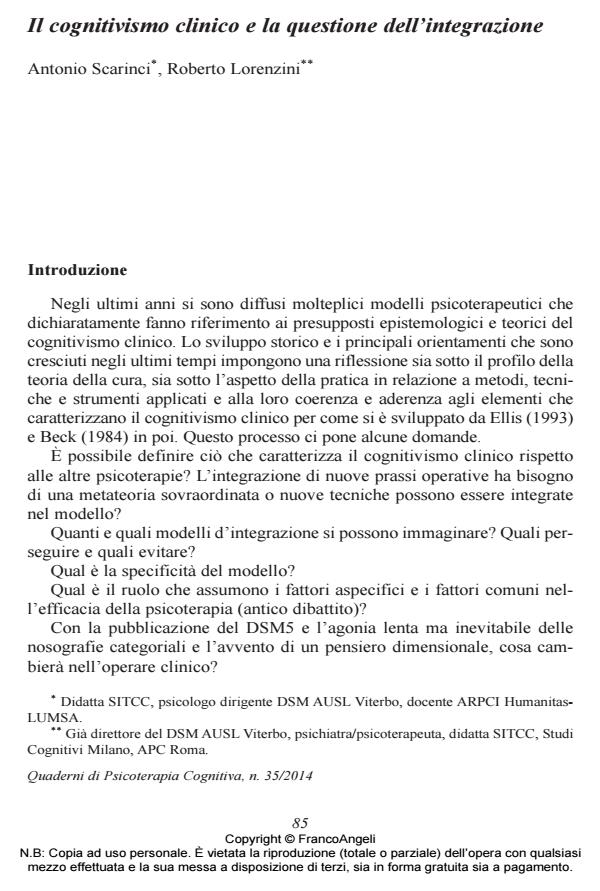The clinical cognitive theory and the question of integration
Journal title QUADERNI DI PSICOTERAPIA COGNITIVA
Author/s Antonio Scarinci, Roberto Lorenzini
Publishing Year 2014 Issue 2014/35
Language Italian Pages 16 P. 85-100 File size 55 KB
DOI 10.3280/QPC2014-035006
DOI is like a bar code for intellectual property: to have more infomation
click here
Below, you can see the article first page
If you want to buy this article in PDF format, you can do it, following the instructions to buy download credits

FrancoAngeli is member of Publishers International Linking Association, Inc (PILA), a not-for-profit association which run the CrossRef service enabling links to and from online scholarly content.
In this article, the authors trace the historical development in the synthesis of clinical cognitive theory from its inception until the third wave. Show that the practices that have spread in recent years to impose a serious reflection on the possibility of integrating methods, techniques and tools in a coherent and adherent to the elements that characterize the theoretical model. Consider it desirable to establish a task force of experts who have an open attitude to contamination and ready to lose something of their special technique to give life to an integration by assimilation within a cognitive theoretical framework. This integration can take place along two axes, one horizontal, one vertical, using empirically supported intervention modules capable of intervening processes is high, both low on the processes that generate the suffering experienced by patients. The proposed contribution has the intent to open a serious reflection on the possibility of defining mode of integration between the various empirically supported psychotherapeutic approaches that are based on the theoretical assumptions of the clinical cognitive theory.
Keywords: Cognitive psychotherapy, integration, empirically supported treatments
Antonio Scarinci, Roberto Lorenzini, Il cognitivismo clinico e la questione dell’integrazione in "QUADERNI DI PSICOTERAPIA COGNITIVA" 35/2014, pp 85-100, DOI: 10.3280/QPC2014-035006